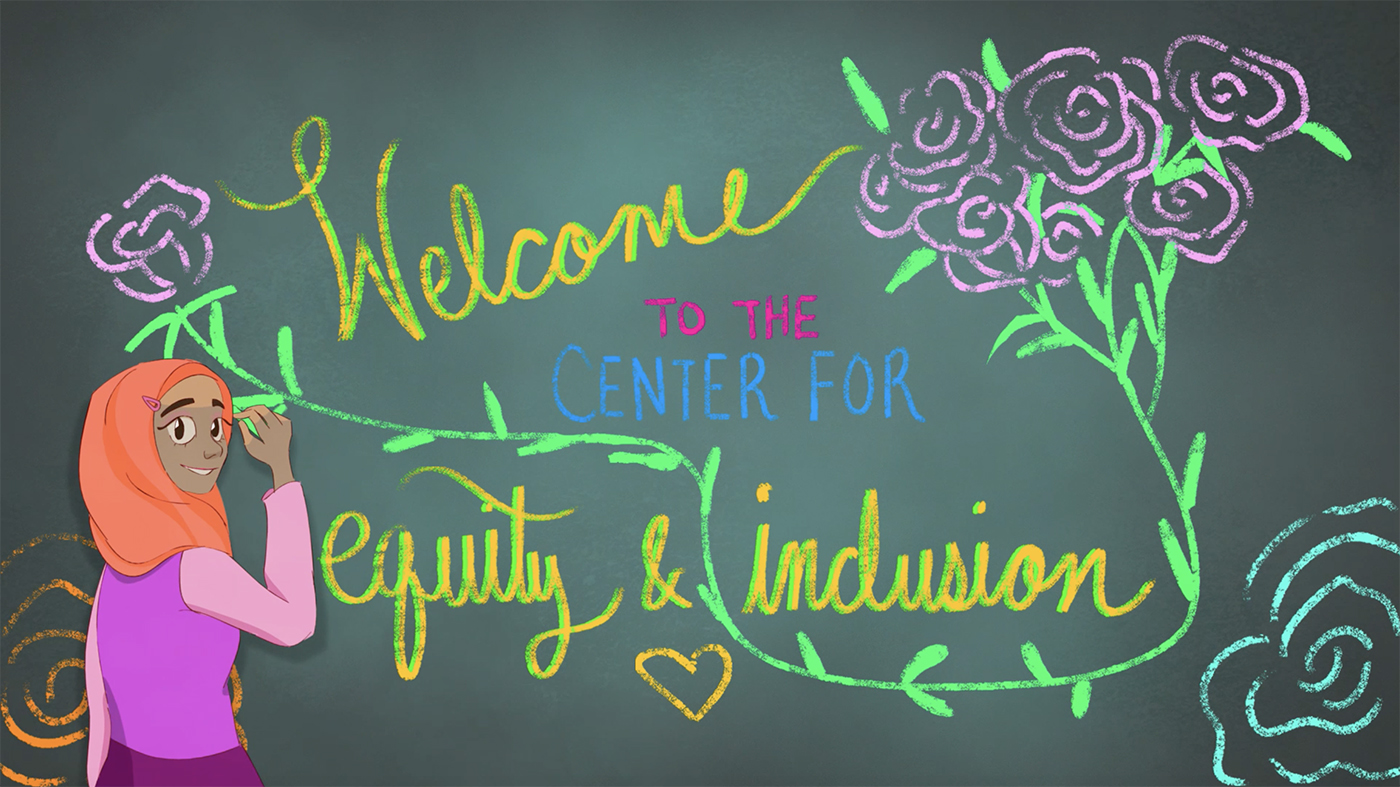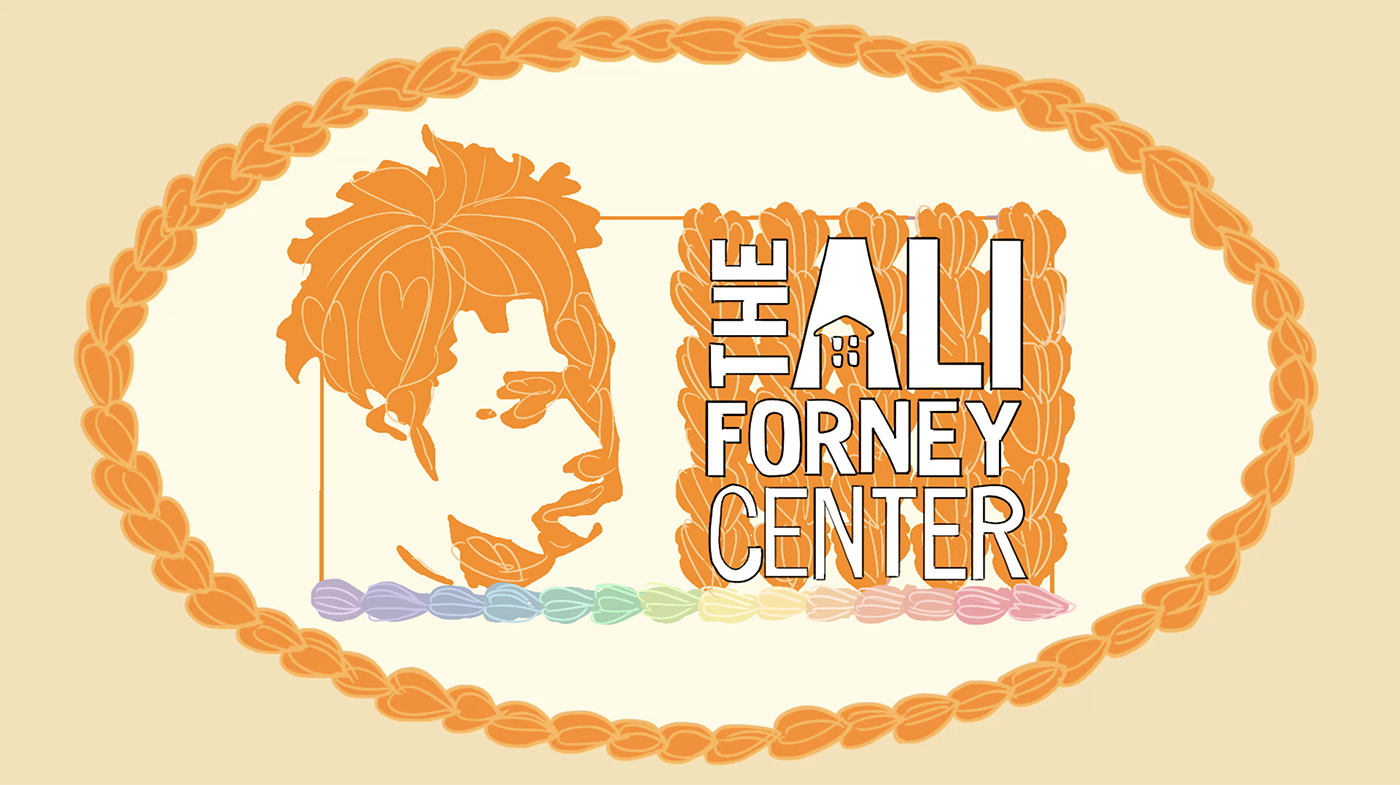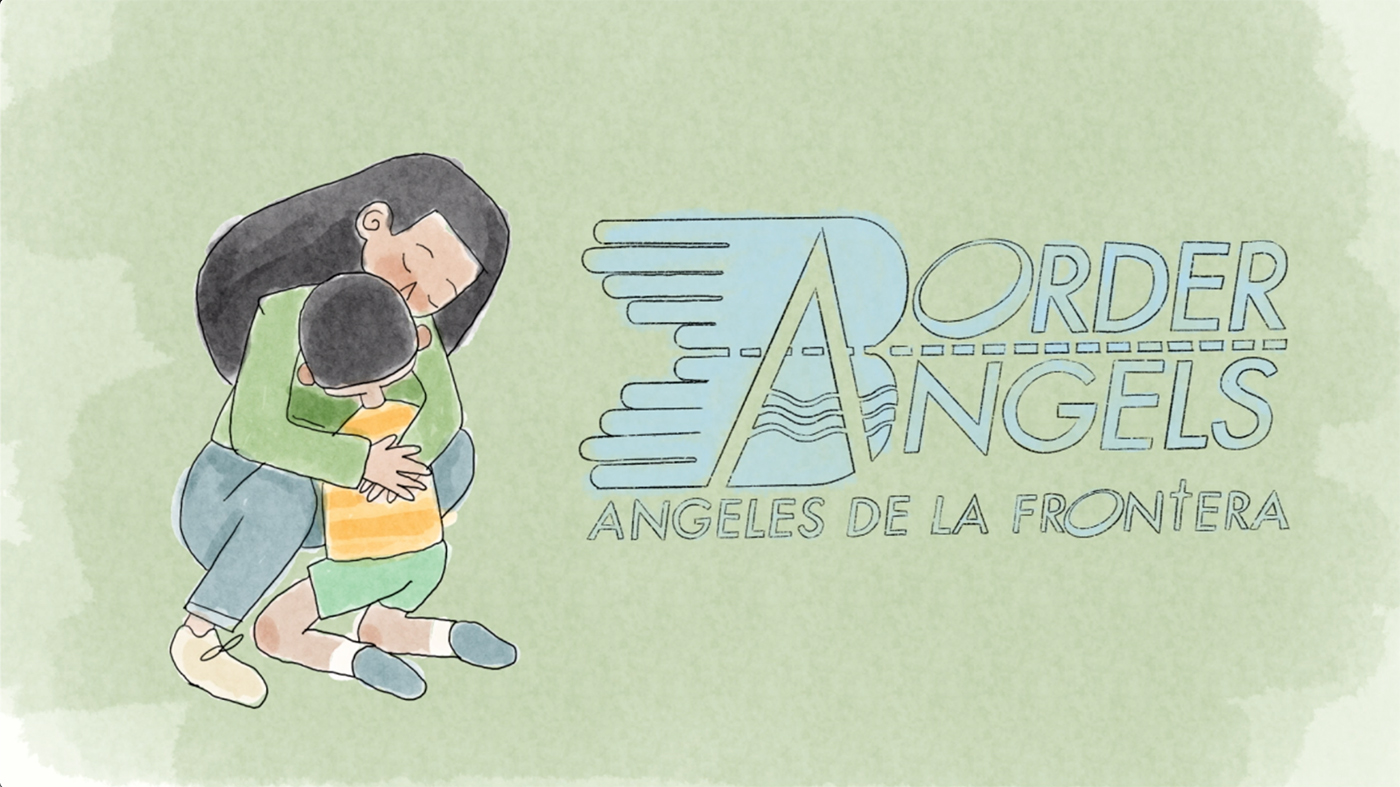From homeless LGBTQ+ youth finding a haven on a winter’s night to adopted animals helping their owners get through the pandemic, the stories in the animations created by Pratt Institute digital arts students celebrate the positive missions of local nonprofits. The projects are part of the Department of Digital Arts curriculum that engages third-year students in working together in teams to support causes they are passionate about.

Screenshot from the animation for the Center for Equity and Inclusion created by Mark Behnam, Jhariah Clare, Dain Jerred, and Nikki Sharma
From homeless LGBTQ+ youth finding a haven on a winter’s night to adopted animals helping their owners get through the pandemic, the stories in the animations created by Pratt Institute digital arts students celebrate the positive missions of local nonprofits. The projects are part of the Department of Digital Arts curriculum that engages third-year students in working together in teams to support causes they are passionate about.
“The assignment purposely comes right before they start their own independent projects—their senior capstones—at this point, the students have the skills from their tech and studio courses to feel confident enough to make work that will be available to the public,” said Michael Enright, assistant professor of digital arts. “And it’s not just about the animated assets that come together, it’s part of a bigger picture where the students are learning work and life skills simultaneously.”
The initiative started in 2014 to give students a hands-on experience in pitching an idea for a cause they care about and creating a unified vision in a studio environment. In fall 2020 classes led by Enright and Olivia Taussig-Moore, visiting instructor of digital arts, students created short animations for the Ali Forney Center, Border Angels, Happy Period, Housing Works, Sean Casey Animal Rescue, the Thirst Project, and Pratt’s own Center for Equity and Inclusion (CEI). While the nonprofits can share the animations, the students retain ownership of them.
Due to the pandemic, the students worked together remotely, giving them an insight into the professional field of animation where many interactions can be online. “For us in the animation business, especially in the New York area, we’ve been working remotely for a long time,” Enright said. “This practice is really part of our world and our profession. This year was a breakthrough because it was not just working alone remotely. There is a sense of community that’s happening while they’re working. And it has helped them learn those communication skills and how to behave professionally in an online environment where they are sharing files or production documents and they are watching the project grow.”
The students were also connecting with the nonprofit leaders and representatives online, resulting in a different working relationship than in years past.
“I think the online environment worked as a kind of leveling field in which the students were watching their clients introduce themselves and their organizations in maybe a living room with cats walking by and things like that,” said Taussig-Moore. “It made things more acutely focused on the organization and the work and took away a little of the anxiety that sometimes comes with meeting them in an office. With the Zoom hiccups and all those things, the students realized that ‘oh this is happening to this important person and it’s happening to me, too.’”
In this process, they got insights into how COVID-19 was impacting these nonprofits. The two animations for Sean Casey Animal Rescue, for instance, address the roles of adopted pets in times of quarantine and isolation. One recognizes the importance of love from animals and another focuses on adopted animals and companionship, told from the perspective of a cat. An animation for the Ali Forney Center, an organization that supports homeless LGBTQ+ youths, visualizes why it’s crucial to have a place for these youths to stay, especially on a winter’s night during a pandemic. Another animation for the Center concentrates on their program that organizes birthday parties for those who would not have had them otherwise.

Screenshot from the animation for the Ali Forney Center by Hannah Borge, Karine Lozewski, and Walker Meyn
“It’s a really great program and I was super happy to get to do some work for them,” said Hannah Borge, BFA Digital Arts (2D Animation) ’22. “This was the first fleshed-out collaborative project I had worked on. Getting a taste of what the animation industry actually looks like in the sense that you’ll almost always be working with a group is experience that’s hard to find a substitute for.”
The students who partnered with Housing Works, a nonprofit which has thrift stores that fund its services fighting homelessness and AIDS, brought their skills together on an animation that follows a pair of donated shoes sold at the store and then the money from their sale that flies through the Housing Works logo represented as a four-story house which they modeled as a 3D asset.
“Inside the house on each floor is a service they provide: the top floor is a doctor’s office, the second down is someone receiving a key, the third down is a classroom, and the bottom floor has a protestor,” said Clara Arnold, BFA Digital Arts (2D Animation) ’22. “This project definitely helped me learn to work with other students and how to organize and divide the work. I also found it fun to come up with the initial idea based off of what the client wanted and present our pitches to them.”

Screenshot from the animation for Border Angels created by Cristina Ibarrondo, Aysia Segura, and Gavin South
Meeting those client needs and matching the spirit of a nonprofit, from its color schemes to its mission, while making something dynamic that reflected the students’ creativity, were central to their collaboration as a team. The students who worked with Border Angels made an animation highlighting the Familias Reunidas project aimed at ending family separation at the border by aiding migrants who remain in detention centers because they cannot afford the high bail. “The money donated goes predominantly to LGBTQ+ people of color, leading to the release of more than 65 migrants since the program’s start in January 2020,” said Aysia Segura, BFA Digital Arts (2D Animation) ’22. “Border Angels wanted an informational narrative that was inclusive and centered around love so that is what we did our best to convey.”
In working with CEI at Pratt, the students portrayed the need for community and a supportive place on campus. They created an animation to spread the word about CEI’s mission to educate, empower, and advocate for students, faculty, and staff and to raise critical consciousness around diversity, equity, inclusion, and social justice.
“The short is about a lost student trying to find his way around campus until he enters the CEI space and is quickly welcomed with smiles and positivity,” said Nikki Sharma, BFA Digital Arts (2D Animation) ’22. “We wanted to create a short film that represents what a safe and inclusive space looks like.” Sharma described how they joined as a team to develop a cohesive piece, from its watercolor-like backgrounds to its individual character designs based on the color palettes of different LGBTQ+ flags. “Essentially, we learned about collaboration, project management, and communication throughout the duration of this project.”
In creating the animations, the students gave visibility to a cause they care about while advancing their digital art skills, preparing them for the next steps in both their academic and professional careers where collaboration, communication, and passion will continue to help them succeed.